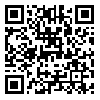Volume 22, Issue 4 (7-2018)
IBJ 2018, 22(4): 246-257 |
Back to browse issues page
Download citation:
BibTeX | RIS | EndNote | Medlars | ProCite | Reference Manager | RefWorks
Send citation to:



BibTeX | RIS | EndNote | Medlars | ProCite | Reference Manager | RefWorks
Send citation to:
Abbaszadeh H A, Tiraihi T, Sadeghi Y, Delshad A R, Sadeghizadeh M, Taheri T et al . Decrease in Cavity Size and Oligodendrocyte Cell Death
Using Neurosphere-Derived Oligodendrocyte-Like
Cells in Spinal Cord Contusion Model. IBJ 2018; 22 (4) :246-257
URL: http://ibj.pasteur.ac.ir/article-1-2220-en.html
URL: http://ibj.pasteur.ac.ir/article-1-2220-en.html
Hojjat Allah Abbaszadeh * 
 , Taki Tiraihi
, Taki Tiraihi 
 , Yousef Sadeghi
, Yousef Sadeghi 
 , Ali Reza Delshad
, Ali Reza Delshad 
 , Majid Sadeghizadeh
, Majid Sadeghizadeh 
 , Taher Taheri
, Taher Taheri 
 , Ali Noori-Zadeh
, Ali Noori-Zadeh 


 , Taki Tiraihi
, Taki Tiraihi 
 , Yousef Sadeghi
, Yousef Sadeghi 
 , Ali Reza Delshad
, Ali Reza Delshad 
 , Majid Sadeghizadeh
, Majid Sadeghizadeh 
 , Taher Taheri
, Taher Taheri 
 , Ali Noori-Zadeh
, Ali Noori-Zadeh 

Abstract:
Background: Oligodendrocyte cell death is among the important features of spinal cord injury, which appears within 15 min and occurs intensely for 4 h after injury, in the rat spinal contusion model. Accordingly, the number of oligodendrocytes progressively reduced within 24 h after injury. Administration of oligodendrocyte-like cells (OLCs) into the lesion area is one of the approaches to counterbalance this condition. Methods: Bone marrow stromal cells were transdifferentiated into neurospheres and then into neural stem cells and later were differentiated into OLCs using triiodothyronine and transplanted into the spinal cord contusion rats. The post-injury functional recovery was explored and compared with the control group using Basso-Beattie-Bresnahan and narrow beam behavioral tests. At the end of 12th week, spinal cord segments T12-L1 were histomorphologically studied by immunohistochemistry. Results: Motor improvement was more obvious during 2nd to 4th weeks and got less prominent during 4th to 12th weeks. Histomorphometric findings indicated that cavity formation decreased in epicenter of transplantation area in experimental groups in comparison with the control groups. Conclusion: The findings obtained in the present study showed that OLC therapy is a potential approach in the treatment of spinal cord traumatic injuries.
Type of Study: Full Length/Original Article |
Subject:
Tissue Engineering and Cell Biology
| Rights and permissions | |
 |
This work is licensed under a Creative Commons Attribution-NonCommercial 4.0 International License. |






.png)
